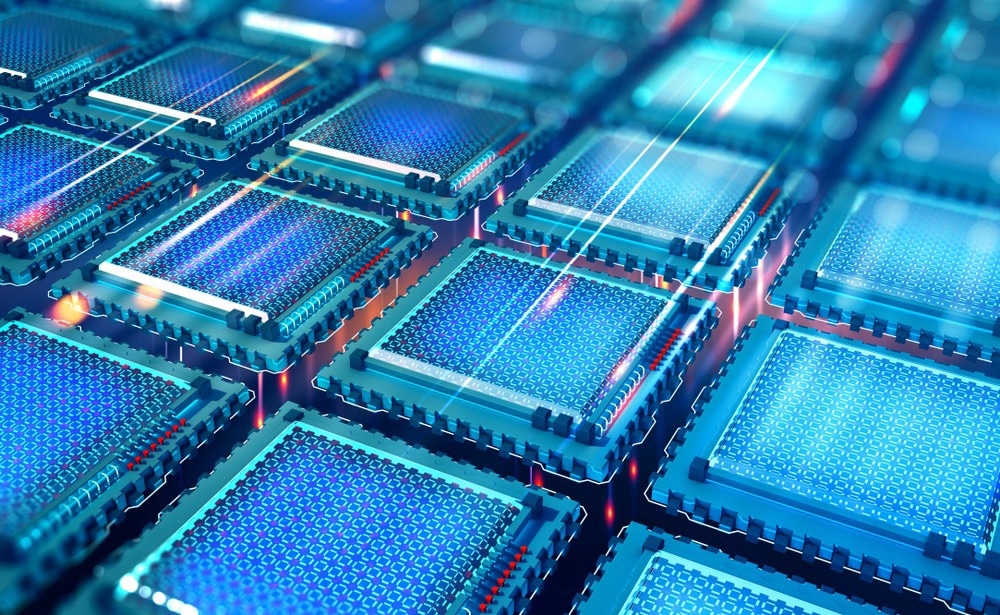Nanotechnology is a rapidly evolving field that continually pushes the boundaries of what is possible at the nanoscale. In recent years, diamond has been the go-to material for quantum sensing, thanks to its nitrogen-vacancy centers, controllable spin, and sensitivity to magnetic fields. Diamond, a default choice for quantum sensing, has met its match in hexagonal boron nitride (hBN), an often-overlooked material that is gaining attention as a potential quantum technology future material.

Image Credit: Yurchanka Siarhei/Shutterstock.com
Understanding hBN's Place in Nanotechnology
Hexagonal boron nitride, or hBN, is a two-dimensional material consisting of boron and nitrogen atoms arranged in a hexagonal lattice structure belonging to the same family as graphene. Its unique properties make it an exciting prospect in nanotechnology; researchers have been exploring hBN for various applications, including quantum computing, quantum communication, and quantum sensing. Nanotechnology is a vast and diverse landscape with many materials and applications; in this context, hBN has typically been overshadowed by graphene and carbon nanotubes.
Challenges
Quantum technologies operate at the smallest scales, dealing with the behaviors of individual atoms and subatomic particles requiring extreme precision and control, which often becomes a challenge due to environmental factors and the inherent quantum nature of the systems involved. Controlling and manipulating quantum states, maintaining coherence, and reducing noise are all significant challenges that HBN, due to its properties, can potentially address.
Diamond and its Limitations
Diamond has been a cornerstone in quantum sensing thanks to its nitrogen-vacancy centers. These centers are essentially defects in the diamond lattice that can be controlled and used for various quantum applications. However, when diamonds are scaled down to the nanoscale, a critical limitation emerges: the super-stable nitrogen-vacancy centers lose their stability, rendering them ineffective for quantum sensing.
The Emergence of hBN
hBN has remained under the radar in quantum technology for a while, but it recently made a compelling case for itself. Researchers have discovered a set of new defects in hBN that might surpass diamond's nitrogen-vacancy centers. Among these, the boron vacancy center has shown immense promise, primarily in its -1 charge state, which is suitable for spin-based applications. However, these charge states have been notoriously challenging to detect and study due to their instability, especially in the demanding environments typical of quantum devices.
Breakthrough Research
A breakthrough came from a recent paper published in Nano Letters by researchers from TMOS (the ARC Centre of Excellence for Transformative Meta-Optical Systems), who developed a groundbreaking method to stabilize the -1 charge state of boron vacancy centers in hBN. Moreover, they have introduced an innovative approach to studying the charge states of these defects using optical excitation and concurrent electron beam irradiation.
According to the research, hBN is poised to replace diamond as the preferred material for quantum sensing and quantum information processing. With the newfound ability to stabilize atomic defects in hBN, 2D hBN layers could find applications in areas where diamond falls short. Moreover, there are no other publications on charge state switching, manipulation, or stability of boron vacancies, highlighting the novelty of their research.

Image Credit: Untitled Title/Shutterstock.com
Potential Industrial Applications
The findings regarding hBN's applicability in quantum technology pique the interest of several industries. Firstly, the information technology sector would greatly benefit from hBN's quantum computing capabilities, which could lead to breakthroughs in fields like cryptography, optimization, and drug discovery.
The telecommunications sector would also be intrigued, as hBN's quantum properties could enhance the security of quantum communication systems. Additionally, the aerospace and defense industry could utilize hBN in quantum sensors for navigation, imaging, and detecting stealthy threats.
Future Prospects of hBN
As we look to the future, hBN's emergence as a competitor to diamond in quantum technology is incredibly promising. It opens up promising avenues for further exploration in quantum technology, allowing researchers to push the boundaries of what is achievable. It addresses the limitations of diamonds and offers new avenues for research and applications in the field of quantum sensing and quantum information processing.
According to the researchers, the next phase of their research will focus on pump-probe measurements to optimize defects in hBN for applications in sensing and integrated quantum photonics. This opens up exciting possibilities for hBN to play a pivotal role in the future of quantum technology.
In conclusion, the recent breakthrough in stabilizing the charge states of boron vacancies in hBN marks a significant step forward in quantum technology. As we explore new horizons in this rapidly evolving field, hBN could become quantum technology's new go-to material, ushering in a new era of possibilities and applications.
With this breakthrough, hBN is not just a potential contender but a material poised to lead quantum technology into the future, leaving the diamond's limitations behind and opening the door to a world of new possibilities. As scientists continue to harness hBN's potential, we can anticipate an era where the seemingly boundless applications of quantum technology become an integral part of our rapidly evolving technological landscape.
References and Further Reading
Aharonovich, I., et al. (2022). Quantum emitters in hexagonal boron nitride. Nano Letters. doi.org/10.1021/acs.nanolett.2c03743
Gale, A., et al. (2023). Manipulating the Charge State of Spin Defects in Hexagonal Boron Nitride. Nano Letters. doi.org/10.1021/acs.nanolett.3c01678
Move over diamond. (2023). hBN is quantum's new best friend. Retrieved from https://www.eurekalert.org/news-releases/993780
Vaidya, S., et al. (2023). Quantum sensing and imaging with spin defects in hexagonal boron nitride. Advances in Physics. doi.org/10.1080/23746149.2023.2206049
Disclaimer: The views expressed here are those of the author expressed in their private capacity and do not necessarily represent the views of AZoM.com Limited T/A AZoNetwork the owner and operator of this website. This disclaimer forms part of the Terms and conditions of use of this website.